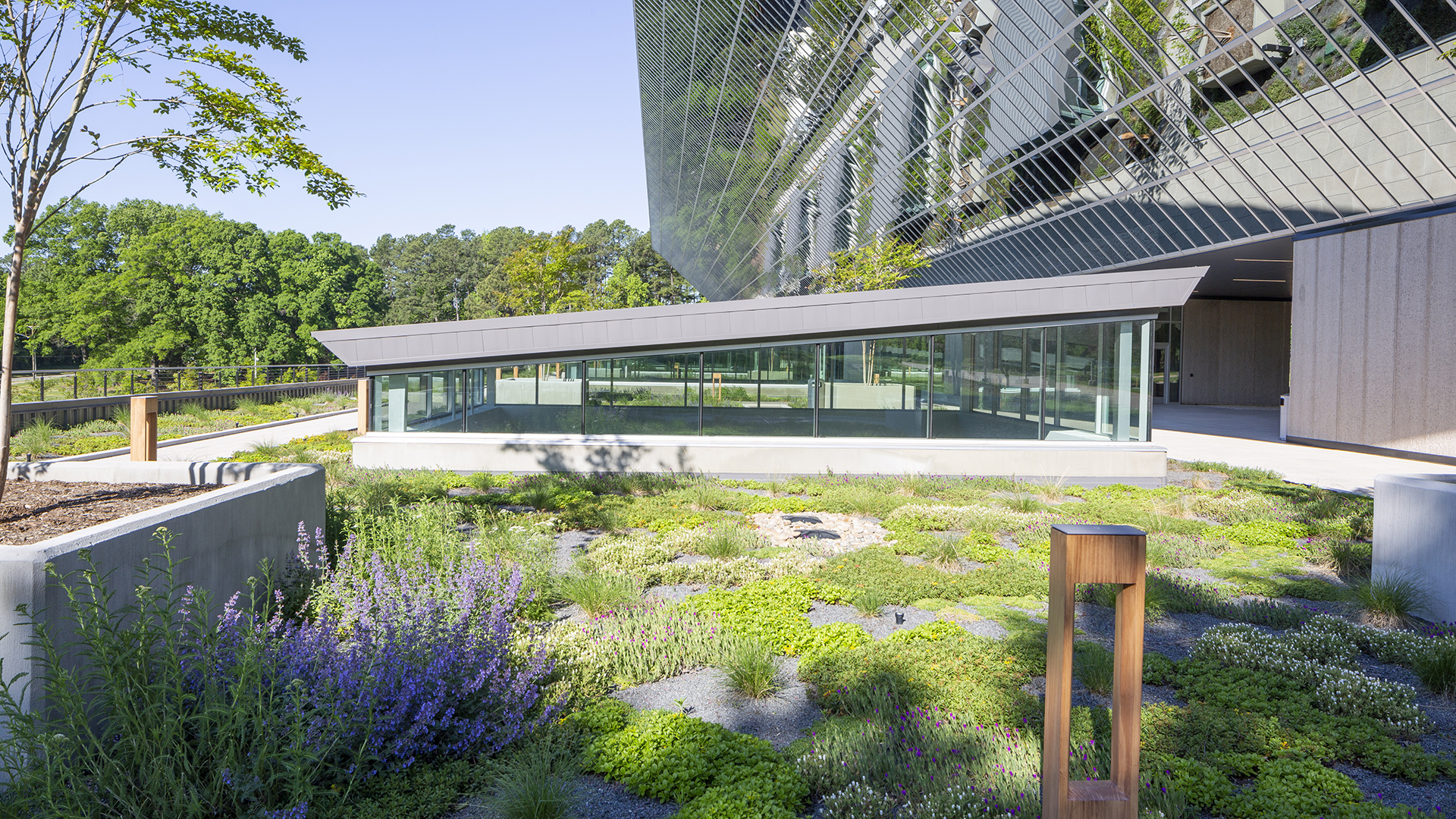As I write this in mid-January, many people are still basking in the warm glow of their New Year’s resolutions—promising to run a 5K, master the art of baking croissants, or finally achieve that beach body.1 While the start of a new year is a natural time for reflection and goal setting, change isn’t limited to January 1. The Fresh Start Effect suggests that new habits are easier to adopt at temporal landmarks—significant moments like a birthday, a new job, or another meaningful transition.
In the building design and construction industry, we embrace fresh starts all the time. And what better opportunity for a reset than the kickoff of a new project?
SETTING THE STAGE FOR A STRONG START
Projects often have a staggered start—contract negotiations, setting up the financials, initial work plans, and defining the project scope all come first. Once those pieces are in place, the next step is assembling a comprehensive project team to kick off the design process. This ensures everyone is aligned on key details like modeling software versions, deadlines, and the technical coordination of design teams.
But before anyone puts metaphorical pen to digital paper, there’s one crucial step: visioning and goal setting.2 While visioning shapes the broader direction of a project, this article focuses on goal setting—specifically, the kind that is measurable and backed by numbers.
Once the vision is in place, how do you define concrete goals? The total project budget is an obvious one, but what about resource allocation or energy efficiency targets?3 More importantly, how can these goals be effectively set and tracked throughout the design and construction process?
SMART GOALS & METRICS: DEFINING SUCCESS IN DESIGN
Goals should, of course, be SMART—specific, measurable, achievable, relevant, and time-bound. In projects, they often relate to water use, energy efficiency, embodied carbon, or construction waste reduction. To set these targets effectively, teams should hold a dedicated charrette—benchmarking thresholds for the project.4 While this can cover a range of sustainability goals, energy typically takes center stage. That’s because tracking and achieving energy targets is both complex and quantifiable, requiring careful planning to ensure success.5
During this charrette, teams should define their project goals and the specific metrics for each. Some goals may be straightforward, like “We want a solar-ready building” or “We aim to lower energy use, but only if the payback period is under two years.” Others may be more complex, such as “We want to shift electrical demand to off-peak hours to take advantage of lower grid rates.”
Once goals are established, they must be translated into measurable metrics. For example, “We want a solar-ready building that can achieve net-zero energy in the future” becomes a concrete target like “The project shall have a predicted energy use intensity (EUI) of 22 or less.” Each broad goal is refined into a clear project principle that guides decision-making throughout design—and can even extend into construction and operation.6
As part of this process, a baseline is established to serve as a reference point, ensuring that progress can be consistently measured against a fixed standard.7
Now that the project has defined goals, we’re all set, right? Not quite. The next step is mapping out how to achieve them.
This starts with a broad list of potential strategies—ideas like “Can we add more wall insulation?” or “Could we capture waste heat from equipment for space heating?” These possibilities are recorded in a tracking document, allowing the team to refine them throughout the design process.8 By documenting these steps, they can be expanded, modified, or eliminated as the project evolves, ensuring the goals remain achievable from start to finish.
8760 HOURS: THE ROLE OF ENERGY MODELING IN DESIGN
Now we get to the meat and potatoes of the process. With goals set, metrics defined, and potential strategies outlined, it’s time to evaluate their impact—especially when it comes to energy. This is where an energy model comes in. Modeling the project’s energy is usually done by the mechanical engineer, hand-in-hand with the architect, as well as other project designers. Inputting the project’s geometry, site, space type, and other metrics, project designers can estimate the heating and cooling needs, as well as energy used. This simulation is only an estimate—like the EPA milage listed for vehicles.
Early in the project, a rough energy simulation model helps assess major factors like building form and site orientation. At this stage, it’s important not to over-define details. Avoid getting caught up in specifics like lighting power or mechanical system types—it’s too soon for that. Instead, use typical, consistent values across all options. The model doesn’t even need to simulate a full year; evaluating total heating and cooling loads is often sufficient for comparing design choices.9 Lower total loads mean the building is more energy efficient and requires less HVAC to keep them comfortable for the occupants.
While exploring multiple options is valuable, careful evaluation is key. Typically, each variable is tested individually, always measured against the baseline. Once the most effective strategies are identified, they can be combined in a final simulation to ensure their collective impact is both feasible and beneficial.
As the project moves from conceptual design to construction documents, the energy modeling evolves alongside it. More detailed information is incorporated, and additional options are evaluated.
During schematic design and early design development, elements like envelope performance and lighting design are analyzed. In the mid to late stages of design development, broad mechanical system options are introduced. While this may seem late to select a mechanical system, the modeling process prioritizes reducing overall heating and cooling demand first. Once the building’s energy needs are minimized, the focus shifts to providing heating and cooling as efficiently as possible—validated through an energy simulation model.
Energy modeling shouldn’t stop at design; it should continue into the documentation phase to ensure the project remains aligned with its goals. It can even extend into construction, allowing the owner and design team to assess proposed changes and material substitutions before implementation, helping maintain performance targets throughout the project.
BALANCING DESIGN VISION & DATA-DRIVEN DECISIONS
I can almost hear you saying, “Wow, this is so cool! I want to try it! Where can I learn more?” I appreciate the enthusiasm. This approach is broadly known as Data-Driven Design because it relies on calculations and simulation models to inform decisions. In fact, there’s an ASHRAE standard dedicated to this process—Standard 209—which I highly recommend reviewing and integrating into your design workflow.10
Now, before the more aesthetically inclined start to worry, I’m not suggesting we abandon parti sketches or design defenses.11 Rather, we should start quantifying the impact of those big architectural moments. Data provides an objective way to compare options. For example, while a southwest-facing view may be stunning, how much will the extra glazing add to annual utility costs? How can we balance these design moments with financial responsibility—both in upfront construction costs and long-term building operation? By integrating data into the design process, we can make informed, responsible, and inspired design choices.
DATA & DESIGN: FINDING THE RIGHT BALANCE
I wish you and your projects success in achieving the goals you set. As you define and track your progress, remember that data is a powerful tool—it should complement, not replace, the more subjective aspects of design. By blending creativity with data-driven decision-making, we can design spaces that are both inspiring and high-performing.
Now, if you’ll excuse me, there’s a croissant recipe calling my name!
FOOTNOTES
- This is a terrible resolution, because all bodies are beach bodies. If you have a body and you’re at a beach, you’ve got a beach body. #bodypositivity ↩︎
- Visioning is essentially the project’s big-picture brainstorming session held early in the design process—where all stakeholders dream up what the space could be before reality (aka budgets, codes, and physics) weighs in. ↩︎
- Typically, this is done in Energy Use Intensity (EUI)—the amount of energy per area over a year (kBTUs/SF*yr) ↩︎
- A charrette is just a fancy word for a collaborative meeting where stakeholders, including the owner’s rep, work through conflicts and brainstorm solutions. Bonus points if the construction manager or general contractor can attend. ↩︎
- Embodied carbon and recycled materials are easy to quantify (X tons of concrete = Y tons of CO₂). Water, however, is harder to predict—how often will office toilets be flushed each day? ↩︎
- Those bonus points for having the construction manager in the charette? Here’s why. Also, include the facilities manager on the owner’s team since they’re tasked to keep things running long-term. ↩︎
- Make sure you are always comparing apples to apples. Comparing apples to bananas to oranges doesn’t help—it just makes a fruit salad of things. ↩︎
- Tracking document = spreadsheet. Microsoft Excel keeps everything running better IMO. ↩︎
- Remember school—units matter! Cooling and heating must use the same units to be added together. Tons and MBH/kW won’t mix without conversion. ↩︎
- Like any good ASHRAE standard, it comes with a long title: “Energy Simulation Aided Design for Buildings Except Low-Rise Residential Buildings.” ↩︎
- Design defenses sound rough—from what I’ve heard. They weren’t part of engineering school, and I’m grateful for that! ↩︎

